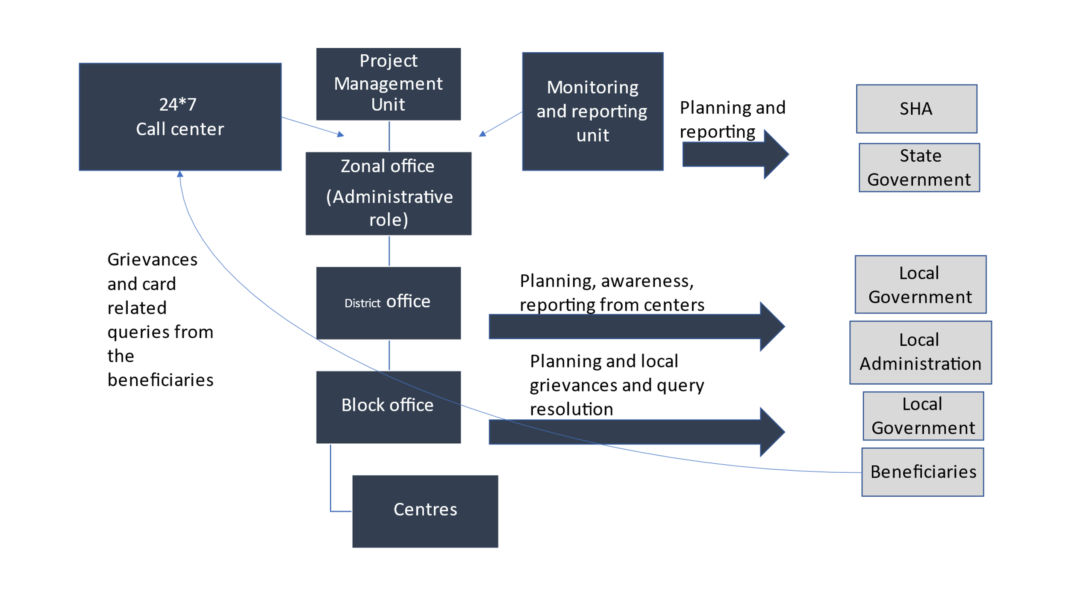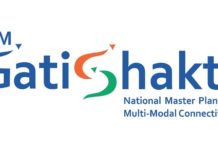Digital Governance in India
Harsh
Student, Birla Institute of Technology
Mobile No. : 9931220381
Email Id: bba60006.20@bitmesra.ac.in
Abstract
Digital -governance is employed for communicating the usage of governance, and its application in data technology (IT), is common in today’s world. Also, it’s utilized for distributing knowledge among the citizens. Information and Communication Technology (ICT) has now provided the means to provide its users with quicker, cheaper, more precise and easier communication, quality facilities, efficient storage, efficient work, data processing and sharing and use of information. This helps to provide tighter controls and raise sales. The benefits of ICT are advantageous to all individuals, parties, corporations, organization or governments. However, this requires the government to reform itself, its procedures, its mindset, legislation, rules and regulations, and its way of communicating with people. The Government of India is transcending from traditional modus operandi of governance towards technological involvement in the process of governance. In order to incorporate such a paradigm shift towards the Digital-governance module, e-governance plays the main role. E-Governance is no longer an option, but an absolute requirement of the day. E-Governance is concerned with government reform, automation of government processes and functions, and enhanced technology-based public service delivery systems such that government can be placed on an auto pilot mode. Govt. of India launched several projects supporting e-governance, like e-seva, smart govt, digital India, e-kranthi, etc. In terms of e-governance implementation, however, some problems create barriers to e-progress. In developing countries like India, where literacy level is very low and even most of the people are living below poverty line, people are not even aware about the benefits of Digital Governance activities and people do not use Information and Communication technologies to a much extent, there exist a number of problems to implement e-Governance activities. This article highlights the current status and the possible solution to the challenges related to the operation & implementation of Digital Governance in India with special emphasis on Pradhan Mantri Jan Arogya Yojna.
Keywords: Digital-Governance, Paradigm shift, Implementation, Status, Challenges, PMJAY.
Research Article
Digital-Governance has become an imperative mode for Governments across the globe to engage and transact with citizens. From being an alternate channel to becoming the norm, Digital-Governance has come a long way. However, Digital-Governance implementation is being challenged by impediments like resource inadequacy – financial, process reengineering, IT & Human, etc. Lately, Digital-Governance implementation has been at the centre of research, which in turn has resulted in an increase in the number of papers dedicated to the subject. As result, it is prudent to analyze the existing literature to identify various aspects associated with the implementation of Digital-Governance along with methodologies being applied in the process.
Implementation methodology of E- Card Generation for Pradhan Mantri Jan Arogya Yojna (PMJAY)
Introduction:
- Ayushman Bharat Pradhan Mantri – Jan Arogya Yojana (AB PM-JAY) is the flagship project of the Government of India implemented with twin objective to provide financial protection and improved access to health care services to 10.74 crore families.
The implementation framework:
Team Structure:
- The project head is responsible for the implementation of the project and coordinating with SHA on regular basis.
- Managers work is to plan, execute, and monitor quality of the project. They work with the SHA team and district administration for successful implementation of the project.
- The cluster heads look after the implementation of the project for selected zones. Depending upon the size of the state, there can be 3-4 cluster heads in a state.
- District coordinators monitor the implementation at the district level through creating awareness, roadshows, coordinating with district authority, local governments.
- Each DC has a technical staff to look after infrastructure and connectivity and a supervisor who is be responsible for enrollment, card printing, and card delivery.
- Each center has minimum of 2 field executives and 1 computer operator for card printing, enrolment, and delivery. For larger centres the number of field executives is higher.
Field Planning/Scheduling
- Preparation of a list of Gram panchayats in rural area and wards in urban areas along with BPL population details.
- Contact details of DCs and Wards is obtained from State Health Authority (SHA)
- Once the list is available a calendar is prepared for card printing and new enrollment.
- Share the plan with the SHA so that all the DCs and wards are informed about the drive – (An order from SHA to the district administration will be helpful)
- Team also contact each DCs and Wards on regular basis to remind them about the plan.
- SHA sharers the access to necessary software and databases
Center and Infrastructure placement
- A center is a place where the verification, printing, enrollment and delivery of the cards is done. The space is provided by the local government through state government. The place could be Primary Health Care center (PHC)/Aganwaadi/ Ward office/Block office preferably with electricity connection and enough space to seat at least 10 people.
- A typical center is managed by 2 Field Executives and 1 Computer Operator. Field executives are responsible for verification, validation, and new enrolments. The computer operator take picture, print the card, and deliver the card immediately.
.
- The center starts operating from 9 AM till 4 PM; Though cards are delivered immediately, all new enrollments receive their card between 4 PM to 5 PM.
A typical center structure
Field Executive 1
Field Executive 2
Computer Operator
Card printing and card delivery; will take 2 minutes
Verification and enrollment; will take 2-7 minutes
Entry
Waiting Zone
Project Management Unit

Project Monitoring and Closing
The below mentioned steps will be repeated for each location, districts, and for overall project

II. Challenges faced for digital-Governance in India
There are a large number of obstacles in implementation of Digital-Governance in India. These can be categorized under the following titles:
Environmental and Social Challenges, Economical Challenges and Technical Challenges.
These challenges are explained below:
A. Environmental and Social Challenges
i) Different Language: India is a country where people with different cultures and different religions live. People belonging to different states speak different languages. The diversity of people in context of language is a huge challenge for implementing Digital-Governance projects as Digital-Governance applications are written in English language. And also, English may not be understandable by most of the people. Therefore, it becomes a challenge for the government to write Digital-Governance applications which are to be implemented for the whole nation in more than one language so that these may be acceptable to the users of a particular language.
ii) Low Literacy: Literacy can be defined as the ability to read and write with understanding in any language. A person who can merely read but cannot write cannot be considered as literate. Any formal education or minimum educational standard is not necessary to be considered literate. Literacy level of India is very low which is a huge obstacle in implementation of Digital-Governance projects. Illiterate people are not able to access the Digital-Governance applications; hence the projects do not get much success.
iii) Low IT Literacy: Much of the Indian people are not literate and those who are literate, they do not have much knowledge about Information Technology (IT). Most of the people in India are not aware about the usage of Information Technology. So, in India, having such low level of IT literacy, how can Digital-Governance projects be implemented successfully? We can say that IT illiteracy is a major obstacle in implementation of Digital-Governance in India. So, first of all Indian people must be made aware about the usage of Information Technology.
iv) Recognition of applications: Recognition of the Digital-Governance facilities by the citizens is another huge challenge. It is a challenge to have all the citizens well aware of the facilities offered by the e-government and have them to trust in it, so that citizens should be ready to accept these facilities.
v) User friendliness of government websites: Users of Digital-Governance applications are often non-expert users who may not be able to use the applications in a right manner. Such users need guidance to find the right way to perform their transactions. Therefore, government websites must be user friendly so that more and more people can use them easily. Hence, these websites can be more effective. If government websites will be designed in an easier format only then these will be more usable for the users who are not expert users of IT.
vi) Services are not accessible easily: The concept of Digital-Governance is claiming for increased efficiency and effectiveness of the government, but these goals will be achieved only if the service will be available to the 100% of the citizens. So, every service should be accessible by anybody from anywhere and anytime. Even if the users of Internet are growing but still there is a major part of Indian population which is not able to access Digital-Governance activities for variety of reasons, e.g., some people may have limited access to Information and Communication Technologies and devices. Therefore, government has to provide internet access through public terminals as a part of their universal access efforts.
vii) Confidence on technologies provided by government: The implementation of public administration functions via e-Government requires that the user must be confident and comfortable while using the technology. He must also trust that technology that he/she is interacting with. Even the government should provide the measures so that the users can trust the technology provided to them. The government has to make a balance between ensuring that a system prevents fraudulent transactions and the burden that extensive checks can take place on people who are honest.
viii) Separation: The separation that exists between the individuals, communities and businesses that have access to Information Technology and those that do not have such access. Economic poverty is closely related to the limited information technology resources. People who are living below poverty line cannot afford a computer and internet connection for themselves to take the benefits of the e-Government and other on-line services. Economic poverty is not the only cause of this separation; it may also be caused by the lack of awareness among the people. In India even some of the economically stable people do not know about the scope and services of Digital-Governance. Indian government has to take some actions to narrower this separation to effectively implement the Digital-Governance projects.
ix) Struggle to Change: The struggle to change phenomenon can explain much of the hesitation that occurs on the part of the constituents in moving from a paper-based to a web-based system to interact with government. Citizens, employees and businesses can all have their biases with respect to how transactions should be processed. Government entities and public policy administrators cannot ignore the changes that occur as a result of the implementation of the ICT. Education about the value of new system is one step towards reducing some of this struggle.
x) Population: Population of India is probably the biggest challenge in implementing Digital-Governance projects. As population is considered to be an asset to the country but it also offers some other challenges e.g., establishing person identities. There is no unique identity of individuals in India although Indian government is making efforts for providing unique identity to its citizens. Apart from this, measuring the population, keeping the database of all Indian nationals and keeping this database updated and then providing the Digital-Governance services to the whole population are major challenges.
xi) Lack of integrated services: Most of the Digital-Governance services which are offered by the state or central government are not integrated. Lack of communication between different departments of government may be its major cause. Therefore, the information that resides within one department has no or very little meaning to some other department of the government.
xii) Lack of awareness in people: Most of the Indian people are not aware of the benefits of Digital-Governance services. Even the government do not pay much attention to make the people aware about Digital-Governance activities. Unawareness is a major challenge in the implementation of Digital-Governance projects.
B. Economical Challenges
i) Cost: In developing countries like India, cost is one of the most important obstacles in the path of implementation of Digital-Governance where major part of the population is living below poverty line. Even the politicians do not have interest in implementing Digital-Governance. A huge amount of money is involved in implementation, operational and evolutionary maintenance tasks. These costs must be low enough so that to guarantee a good cost/benefit ratio.
ii) Applications must be transferrable from one platform to another: Digital-Governance applications must be independent from hardware or software platforms. Therefore, these applications can be used at any platform irrespective of the hardware or software and from one platform to the other platform. These applications may also help on possible reuse by other administrators.
iii) Maintenance of electronic devices: As the Information Technology changes very fast and it is very difficult for us to update our existing systems very fast. Regulations of different devices and their different characteristics may vary and the system in use must be capable to handle all the emerging needs. Maintenance is a key factor for long living systems in a rapidly changing technical environment.
iv) Low per Capita income: Per capita income means how much each individual receives, in the terms of money, of the yearly income generated in a country. This refers to what each individual receives if the yearly national income is divided equally among everyone. Per capita income of India is low as compare to the other countries. Therefore, people cannot afford on-line services provided by the government which is a challenge for implementation of Digital-Governance.
v) Limited financial resources: The Gross Domestic Product (GDP) is one of the measures of national income and a country’s economy. GDP is defined as the total market value of all final goods and services produced within the country in a given period of time. GDP of a country is the measure of its financial strength. India has limited financial resources so as to implement and maintain the e-Government projects properly.
C. Technical challenges
i) Interoperability: Interoperability is the ability of systems and organizations of different qualities to work together. The Digital-Governance applications must have this characteristic so that the newly developed and existing applications can be implemented together.
ii) Scale of applications: e- Governance projects have to be designed to scale from the day one. Digital-Governance is supposed to affect every citizen of the country, so Digital-Governance applications must have the scale to interface with every citizen.
iii) Multimodal Interaction: Multimodal interaction provides the user with multiple modes of interfacing with a system. An e-Government application can be really effective if its users can access it using different devices.
iv) Privacy and Security: A critical obstacle in implementing Digital-Governance is the privacy and security of an individual’s personal data that he/she provides to obtain government services. With the implementation of e-government projects, some effective measures must be taken to protect the sensitive personal information of the people. Lack of security standards can limit the development of e-Government projects that contain personal information such as income, medical history etc.
v) Scope of applications: The very first step in creating a good application is to define its scope very well and everything else comes later. The applications which are provided by e-Government, their scope must be known in advance for the accurate implementation of Digital-Governance projects. vi) Tried and tested technologies: Technology tends to get out of date very fast. Our government may not be in position to buy new servers every year. So, it is better and safer to use technologies and products which are tried and tested for longer periods of times than using the latest ones. vii) Geographical problems: Corporate networks reside on reliable and controlled networks. Government networks have to go into all areas which are even unfriendly to live. It is, however, costly to wire up all the villages in the country. So, Digital-Governance systems must have to use the wireless networks like existing cellular networks to reach the applications into remote areas irrespective of the geographical issues. viii) Local language: The acceptance of English language in India is very low. The Digital-Governance applications are written in English. That is why Digital-Governance projects do not get success. Hence, the Digital-Governance applications must be written in local language of the people so that they may be able to use and take advantage of these applications.
III. Conclusion
We live in the age of a revolution in information technology (IT). It is indisputable that information technology (IT) is widely agreed to transform and accelerate the development process, especially in developing economies. In order to facilitate underprivileged people, the rapid development of communication technology, especially the Internet, has enabled governments around the world to accelerate the push for e-Governance in their most remote regions. Under the Government of India’s Department of Information Technology, NIC is a leading science and technology agency facilitating government solutions for information and communication technology (ICT). Over the last three decades, the NIC has accelerated the country’s e-Governance push by ensuring stronger and more open governance. In India, the usability of e-governance differs with rural and urban areas, and several factors are considered to exist, such as language difficulties, literacy variations, especially in the core rural area; low IT literacy, lack of integrated services, etc. While governance is concerned with safeguarding all people’s legal rights, ensuring fair access to public services and the benefits of economic development for all are equally essential. As part of good governance, it also ensures that the government is open in its transactions, accountable for its operations and quicker in its responses. Not only to enhance government processes’ accountability, openness and effectiveness, but also to promote sustainable and inclusive development. E-governance improves public services in the most distant corners of society’s marginal sectors, without having to negotiate with intermediaries. The successful use of information and communication technology (ICT) to strengthen the governance structure in place and provide better services to people is e-governance. In India, e-Governance is regarded as ahigh priority policy, as it is considered the only way to take IT to the “common public.” E-Governance innovations give opportunities to leverage the power of Information and Communication Technology (ICT) to make the governance business inexpensive, qualitatively sensitive and genuinely comprehensive. The use of the internet offers services more efficiently, but it also brings more accountability between the government and people. The government of India has already initiated the electronic governance mechanism. Several programs for e-governance purposes have been launched. The Ministry of Information and Technology has commissioned a report to establish mechanisms for the evaluation of e-governance services. E-government, however, refers to an innovative mode of governance.
As the usage of Information Technology is growing very fast, Indian government is making many efforts to provide services to its citizens through Digital-Governance. Although Indian government is spending a lot of money on Digital-Governance projects but still these projects are not successful in all parts of India. The participation of people can play a vital role in implementation of Digital-Governance in India.
References
1 Verma R.K., Kumari A. (2010) “E-Governance at Grassroots Level in South Asia: A Study of Citizen-centric e-Panchayats in India”. Asia-Pacific Journal of Rural Development Vol. XX, No. 1
2 http://www.beep.jepponet.dk/egovIndia/ShowCase.asp?Case ID=1492
3 Jha, R., and Sivani, S., Towards a Methodology for Defining Implementation Strategies for E-governance Adoption: Indian States, International Journal of Applied management and technology, Vol 5, No 3., 2008 pg. 117-138.
4 http://www.cic.nic.in/welcome.html










